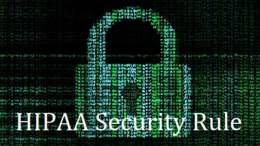Privacy vs. Security Rule
By Art Gross – When it comes to HIPAA compliance, it’s easy to feel as if you’re being pulled in a million different directions at once. In part, this could be due to the fact that there are 4 different rules that go into HIPAA: the Privacy Rule, the Security Rule, the Breach Notification Rule, and the Omnibus Rule.
Read More






